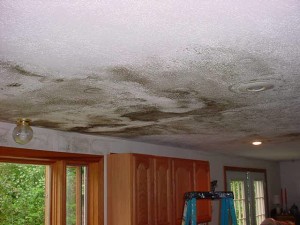 A building can become flooded or waterlogged within a few minutes, if the water leak is severe enough, but drying out the damage can take much, much longer. It is often a slow and arduous process. To make the process as successful as possible, and to allow for effective water damage restoration, you are advised to follow certain steps.
A building can become flooded or waterlogged within a few minutes, if the water leak is severe enough, but drying out the damage can take much, much longer. It is often a slow and arduous process. To make the process as successful as possible, and to allow for effective water damage restoration, you are advised to follow certain steps.
Make sure the building is safe
Although you may think that your primary concern is the water damage, you should be aware that flooding can cause other issues. Water may cause structural damage to a building, and it can also affect other utilities. If there is a lot of water in the building, you should be aware that it may have affected the electricity and gas supply too. You may want to get an electrician or a gas specialist to check your utilities, so that you can make sure that they are safe before you allow your family back into the building.
Remove standing water
Once it is safe to do so, you should remove all standing water by pumping it out, mopping it up or using any other removal method.
Rinse
If your home has been affected by dirty water, you should take the opportunity to rinse everything whilst it is still wet. Dirty water can be dangerous, so it is important that you ensure that everything is clean before it dries out, because there is no point in drying the house, only to wet it all again when you come to clean it.
Waterlogged items
Check for waterlogged items, including boxes, soft furnishings and roof insulation. It is important to remove these from the room at the beginning of the drying process. Waterlogged items will hold water for a very long time, and will help to increase the humidity level in the room. This will mean that the whole room stays wetter for longer. Removing the items from the affected room may also help these items to be restored, and dried individually. However, in some cases, completely water logged items may need to be disposed of.
Ventilate the rooms
Whenever possible, open windows in the rooms to allow air circulation. If there is an external vent, this is even better. As well as helping the room to dry out, good ventilation can help to reduce the likelihood that mold will develop in the affected room. Good ventilation will help the humidity in the room to equalize with the external humidity level. If the windows have swollen shut because of the water damage, you may have to seek professional help to allow you to open the windows properly.
Use a de-humidifier and a fan
If you are able to use the electricity in the room, invest in a de-humidifier. This device will help you to remove some of the humidity from the room, although you may have to manually empty the collected water fairly regularly. Using an electric fan will also encourage air circulation in the room and will prevent the air from becoming stagnant.
